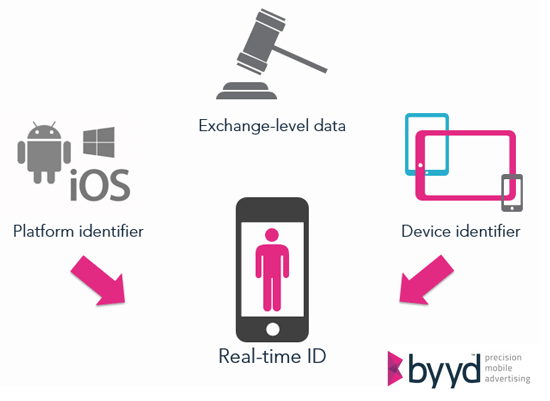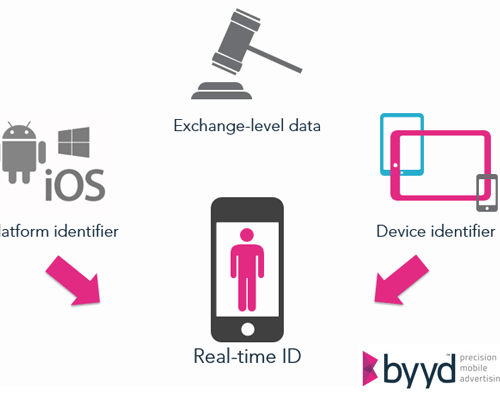Remember web 2.0? While some claimed it was just a marketing term, it really was a change in how the web worked. Instead of static, one-way communication from monolithic websites, we were suddenly all able to communicate en masse, sharing whatever we liked, whenever we wanted, without barriers of technology or money.
Web 2.0 enabled marketers to talk and, as importantly, listen to their audiences. These engaging, two-way conversations meant that marketing communications was not just about awareness any more: it was about interest too, engaging with people to elicit responses and stay front of mind.
While people were discussing web 2.0 I often wondered whether web 3.0 would be mobile: from two-way communication to three-dimensional, removing the barriers of location too, so that people could communicate wherever they were. This has come to be (as mobile advertising crosses the billion pound mark, according to the IAB) and as a result, marketers have a real opportunity to reach further down the funnel, right down to where communications traditionally cannot reach: action.
The key to unlocking the lower reaches of the funnel is simple: technology. We know this to be the case because we recently made the finals of The Drum’s Digital Marketing Awards through a study where we showed how mobile advertising worked, from awareness through to interest, desire and action. Here’s how.
The desktop advertising empire built on the cookie
If digital advertising offers tremendous potential for targeting, then there is even more to be won through retargeting. This is when an advertiser is able to discern whether someone has seen an ad before, and adapt. This can be positive retargeting – showing a different ad, similar to a new series in a TV episode – or negative retargeting, in which the advertiser decides not to show an ad at all because the user might find it too familiar.
It’s a very powerful tool, and one that desktop advertising cracked some time ago. This is achieved by placing a third-party cookie on your machine which other publishers and advertisers can read. So, if you’re looking for shirts on the John Lewis website, this is registered on the third-party cookie. Move across to, say, the Guardian’s site, and lo and behold, there is an ad for John Lewis shirts.
Given that cookies are universal and that there is a limited number of browsers for desktop which all operate in broadly the same way, it has been a highly effective solution. You could almost call it the advertising empire built on the cookie.
But with mobile, everything changes. There is no such thing as a mobile cookie. Some browsers, such as Apple’s Safari, by default do not recognise third-party cookies. And the vast majority of mobile usage takes place in apps rather than mobile sites, where data is siloed and not shared.
This is why companies such as byyd have invested massive amounts of resource into developing innovative ways of retargeting that do not use cookies. The challenge is to identify when someone has already seen an ad, while preserving their anonymity and privacy. The opportunity is huge: truly effective retargeting that can even break out from mobile and work across all platforms.
The mobile cookie jar is empty
At byyd we are firmly of the opinion that the most incisive use of technology brought to focus on the issue is the way forward. This means plugging into the best big data, and applying the most sophisticated algorithms to that data, so that we can win on our clients’ behalf.
So, we have developed what we call our Precision Audience Engine. This takes data from several sources which together build a profile of a user: the user’s device – that is, what make and model; the user’s platform, such as Android or iOS; and exchange data about the publisher and advertiser, shown below.

We can bring this data together to form a unique user ID, which we then cross-reference whenever a user wants to see a page. If the ID has been exposed to an ad before, we can retarget, positively or negatively.
And note that none of this data can be used to identify individuals. We are not in the age of Minority Report, nor would we ever want to be. This is why we work very closely with industry bodies to ensure privacy, such as membership and alignment with MMA and IAB industry self-regulation, as well as our use of Mobile AdChoices for any audience advertising.
Forget cookies, the proof is in the pudding
We know that our Precision Audience Engine works because we used it for a recent ground-breaking case study.
Working with MediaCom and Sony we developed a brief that involved establishing how effective the Sony Xperia Z1 mobile advertising campaign had been, punching through the marketing funnel from top-level awareness through to interest, desire and action. This had never been done before with mobile advertising.
So we partnered with On Device Research to devise a way of determining this. The key was being able to ask questions of people who had seen an ad, versus those who had not, and to compare their responses. And the means of unlocking this? The Precision Audience Engine.
By comparing the responses of ‘exposed’ vs ‘non-exposed’ we could see that, at every level of the funnel, the mobile ad campaign had provided significant uplift. For example:
- Awareness – Spontaneous brand awareness raised from 37% among non-exposed audiences to 60% among exposed
- Interest – Exposed audiences twice as likely to consider solely an Xperia Z1 as their next phone
- Desire – ‘Very likely to buy’ doubled among exposed audiences, ‘very unlikely to buy’ halved
- Action – Among exposed audiences, very/somewhat likely to buy increased from 49% to 64%
Furthermore, the technology also enabled us to show the On Device Research questions immediately after displaying the ad, on the user’s device. So as well as using tech to determine who had seen the ad before, we could also get the response at virtually exactly the same time, in the same context. So it was ground-breaking in this respect too.
Mobile advertising has come a long way since I co-founded the company in 2008. We’ve moved from ‘spray and pray’ to ‘focus and find’ in a remarkably short time, and this is because mobile has tackled almost insurmountable problems head-on. The solution has been to invest in technology that can scale as mobile advertising scales, while maintaining precision.
The side-effect of technology such as the Precision Audience Engine is that this approach can work across any platform. So, in addressing the cookieless approach for mobile, the mobile advertising industry has, in theory at least, showed how this can work for all digital advertising. Perhaps, ultimately, this will be web 4.0.






